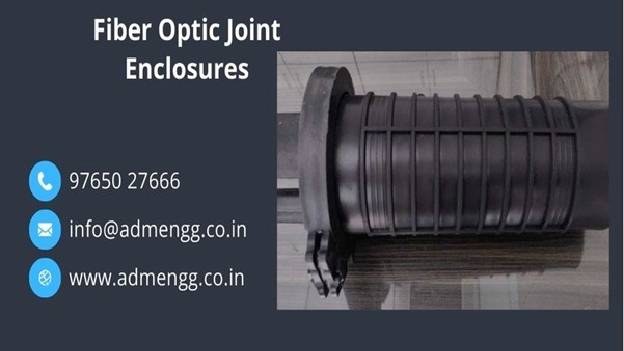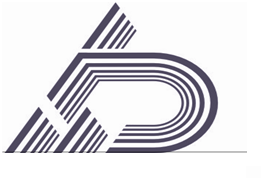
Advantages and Applications of Black Fiber Optic Joint Enclosures
Fiber Optic Joint Enclosures are essential components for connecting two fiber optic cables, providing a protective and aesthetically pleasing solution. Made from strong, crush-resistant black polymer, these casings protect the fiber joint from outside elements.
The Black fiber joint enclosure is versatile and can be utilized in aerial, direct burial, and duct applications. Its durable housing and key components provide superior protection against fire, water, and seismic events during splicing, pulling, tension, and impact. This ensures the longevity of the enclosure in harsh environmental conditions while maintaining the highest quality standards.
We provide a broad selection of carefully designed joint enclosures for fiber optics. The exquisite 12F and 24F Bamboo joint boxes are extremely rare due to their remarkable quality and suitability for outdoor use. Additionally, the elegant Tiffin Type/Rectangular type boxes in our collection come with practical 2- or 4-way cable entry junction boxes that are perfect for indoor applications. Even while these stylish enclosures work especially effectively in little spaces, their impact is everything but insignificant.
The two main categories of fiber optic splice closure are dome and inline.
The earlier FOSC had cable inputs at both ends, whereas the later model had them at the bottom. An enclosure's function is to join or divide external optical cables. This can apply to dome or horizontal optic tube fiber optic closures. Their surface is composed of high-quality plastics, and inside the fiber joint closure are splice cassettes that shield the splicing and additional fiber wire. The temperature ranges in which they work is -40 to +65 degrees Celsius.
Types of Black Fiber Optic Joint Enclosures
1. Horizontal Type Fiber Optic Closure Horizontal fiber optic splice closures, also known as in-line fiber optic splice closures, are rectangular enclosures designed for horizontal installations. They provide security and organization for fiber splicing in underground, hidden, or direct burial applications. These closures contain fiber splice trays that protect and house the fiber splices, offering mechanical and environmental protection. Additionally, they often have multiple entry and exit ports to accommodate multiple fiber optic cables.
2. Vertical Type Fiber Optic Closure: Dome fiber optic splice closures are used for vertical installations and provide a safe and organized space for splicing fiber optic cables outdoors. They have entry ports for cables and sealing mechanisms to protect against environmental elements. Inside the closures, fiber optic trays hold and shield the splices to ensure stability and prevent damage. Additional features like strain relief components may be included for added security. Fiber Optic Joint Enclosure may include extra features such as strain relief components.
Applications of Fiber Optic Joint Enclosures
1. Optical Fiber Telecommunications ADM Engineering offers a range of high-quality fiber optic cables and accessories needed in the communications industry, as the demand for faster and more efficient information transmission has led to the development of various technologies.
2. Fiber Optic in Data Communication Due to the rapid growth of data services, there is a significant increase in demand for large-scale data transfer on the backbone network. To accommodate this, 100G switches with 100G QSFP28 optical modules and MTP/MPO patch cords are commonly used in 100G data centers.
3. Fiber Optic Broadcast Optical fiber is a highly effective method for broadcasting TV signals due to its high capacity and ability to transmit digital signals without compression.
4. Military of Fiber Optic Military optical fiber communication has become crucial in various sectors of the military, including radar, ships, armaments, aviation, and aerospace, due to the military's adaptation to the information age.
The Benefits of Fiber One of the most widely used technologies for cabling updates and new installations, including desktop applications, backbone, and horizontal, is fiber optic cable. When compared to copper, fiber has several advantages.
• Increased bandwidth Compared to copper, fiber offers more bandwidth and more consistent performance up to 10 Gbps and higher. Fiber has a higher bandwidth than copper line, allowing it to convey more information with more accuracy. Remember that the kind of cable being utilized affects the fiber speeds. The maximum bandwidth is provided by single-mode fiber, which also has no bandwidth constraints. The EMB of OM3 50-micron laser-optimized wire is 2000 MHz/km. The EMB of OM4 50-micron laser-optimized cables is 4700 MHz/km.
If your current network is slow or unable to handle your business data transfer needs, experiencing issues with multicast video or CCTV image quality, or having trouble accessing cloud applications, upgrading to fibre optic connectivity could greatly improve your situation.
• Higher bandwidth means faster speed Having a high bandwidth is essential for fast internet speed, as it allows for simultaneous tasks such as uploading, downloading, and making phone calls. Slow internet connections can significantly impact business productivity, making it crucial to have fast, efficient, and reliable internet connectivity.
Fibre optic networks come with options ranging from 5 Mbps to 100 Gbps, making them quicker than even the fastest copper Internet connections. Your staff may take advantage of rapid data connections and equal upload and download times with a fiber optic network.
• Longer transmission distances Fibre optic cables have low power loss, allowing for greater bandwidth and longer transmission distances compared to copper cables, which have a maximum limit of 100 meters. Fibre optic cables can reach distances of tens of kilometers.
• Greater flexibility Unstable connections can result in financial losses for companies, as even a small amount of unexpected downtime can halt productivity. Consistent communication and connectivity are essential for the success of any business
Fibre optic cables are thinner and lighter than copper cables, and they can withstand more pressure and are less likely to be damaged or break.
Fiber is more resilient than copper wires because it is flexible and resistant to corrosion.
Fibre optic cables are not affected by electrical currents, making them immune to interference from electromagnetic sources, lightning, and radio signals. On the other hand, copper cables are susceptible to induced power, lightning strikes, and intentional signal disruption due to their ability to conduct electricity.
Fibre optic networks are not affected by bad weather, unlike copper cabling which can be disrupted or halted by inclement conditions.
• Improved latency Fibre optic networks can reduce latency issues commonly found on cable Internet, especially when streaming high-definition content or transferring large files. Lower latency can bring advantages such as improved voice quality for VoIP users, increased capacity for cloud-based applications, seamless file downloads and uploads, and enhanced teamwork among employees.
• Stronger security Fiber cable ensures the safety of your data as it does not emit signals and is highly secure against tapping. Any attempt to breach the physical security of the fiber system will be easily detectable due to light leakage. Additionally, fiber networks allow for centralized placement of electronics and hardware, eliminating the need for equipment to be spread throughout a building.
• Immunity and reliability Fiber optic cables offer highly dependable data transmission due to their immunity to various environmental factors that impact copper cables. The core of fiber cables, made of glass, prevents the flow of electric current. Fiber is resistant to interference from electromagnetic and radio-frequency sources, crosstalk, impedance issues, and other disturbances. It can be installed near industrial machinery without concern and is more resilient to temperature changes and water exposure compared to copper cables.
• Design Fiber optic cable is lightweight, thin, and more durable than copper cable, making it a more efficient and space-saving option. Unlike copper cable, which requires higher grades for faster speeds, fiber optic cable remains consistent in size and weight. Additionally, fiber optic cable has pulling specifications that are significantly higher than copper cable, making it easier to handle and test.
• Migration Media converters are becoming more widespread and affordable, simplifying the transition from copper to fiber networks. These converters seamlessly connect existing hardware and allow for easy incorporation of fiber into network upgrades. The introduction of 12- and 24-strand MPO cassettes and hardware also makes planning for future high-speed networks simpler.
• Field termination Despite fiber being more challenging to terminate compared to copper, technological advancements have simplified the process of terminating and utilizing fiber in the field. The introduction of quick fusion splicers with auto-alignments allows for fast splicing, while auto-aligning pins guarantee accuracy. Additionally, the use of pig-tails and pre-terminated cables ensures quick and effortless field connections.
• Cost Hardware, components, and fiber cables have all become less expensive over time. In general, fiber cable costs more than copper cable up front, but it can end up costing less in the long run. Fiber usually requires less networking hardware, has less downtime, and is less expensive to maintain. The cost of installing fiber has also decreased as a result of developments in field termination technology.
ADM Engineering offers Fiber Optic Joint Enclosures for both dome and inline applications. They vary in size, shape, cable ports, and splice capacity to accommodate various outdoor optical fiber cable connections. To split the optical signal, some types can be assembled using a fiber splitter. For fiber optic solutions, these fiber optic splice closures are affordable and practical.
We are delighted to assist you and begin doing business with you. If you have any questions, please email info@admengg.co.in-97650 27666

